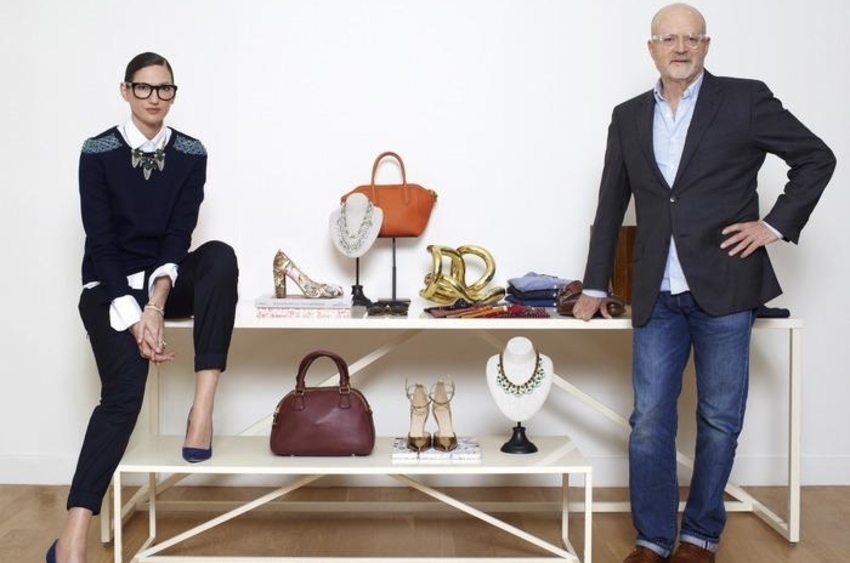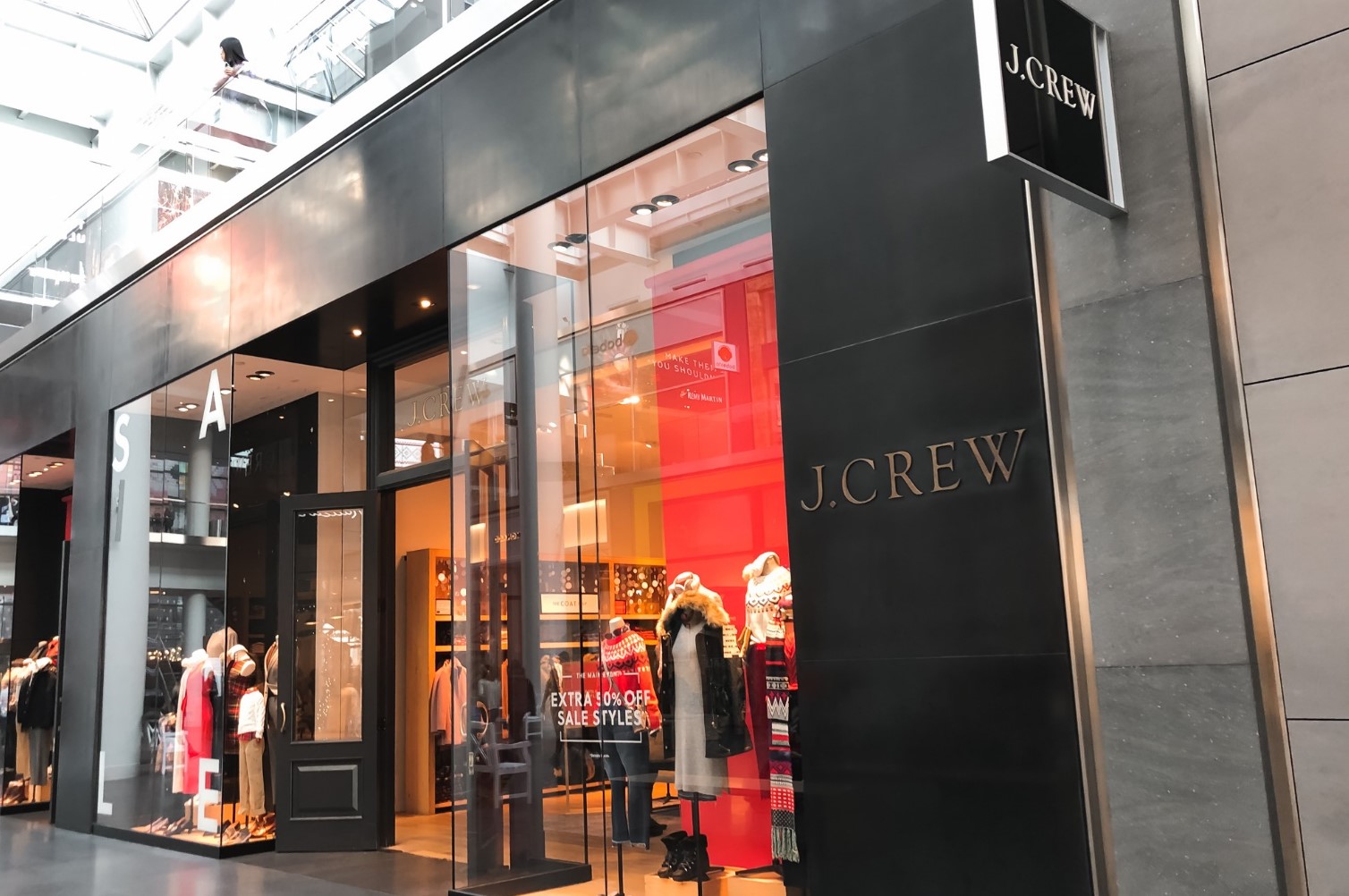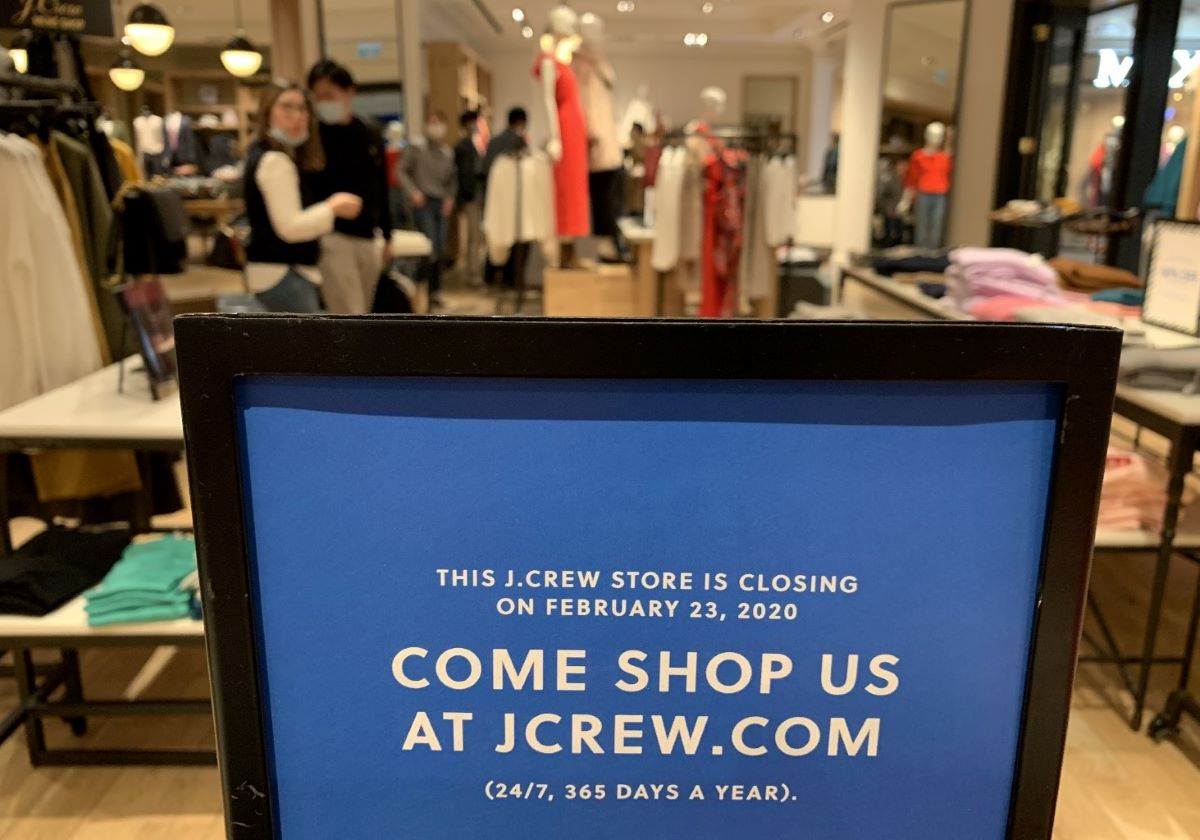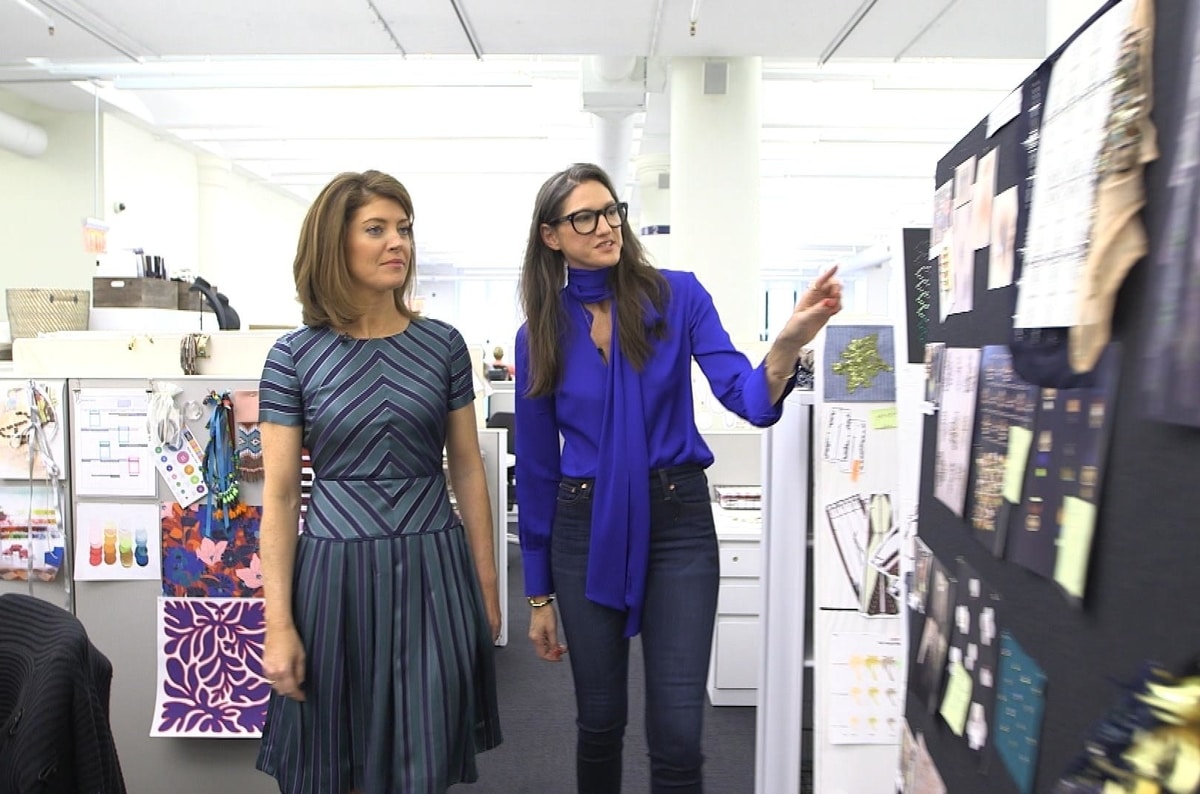The Back Down of an Once Fashion King and the Lesson Learned From J.Crew’s Setback
At the height of its success, J.Crew and its sister company Madewell were operating in over 100 countries and had over 500 stores. Seen on celebrities, politicians, and working professionals around the world, J.Crew was considered at the top of the retail food chain. So how did the brand go from extreme popularity to bankruptcy?
In 1947, Mitchell Cinader and Saul Charles founded Popular Merchandise to sell a line of simple and affordable womenswear, Popular Club Plan, using door-to-door salespeople and at-home demonstrations.
Popular Merchandise was relatively successful over the following decades, adding a menswear offering, too, but the ’80s saw a new trend emerge in American retail: Catalogues.
The success of its competitors brought about important changes for Popular Merchandise Inc. In 1983, the company rebranded to J.Crew, in a bid to position itself more squarely within prepwear and compete with the likes of Ralph Lauren. Simultaneously, the company’s first catalogue was sent out to American households.
It was with the catalogues of the ’80s and ’90s that J.Crew built its reputation as a purveyor of affordable American prep fashion. With 14 catalogues a year, each with about a hundred pages, J.Crew managed to grow its sales by roughly 25 percent year-over-year in the ’80s. It went from being a couple-million-dollar business to a hundred-million-dollar business in but a few years.
It’s important to note: The catalogues weren’t just crucial to offering an in-depth look at the garments through detailed photos—think different angles and close ups of fabrics and patterns—they sold the J.Crew ethos. They were colorful and youthful; they exuded an effortless elegance; made Oxford cloth button down shirts look at home on New England beaches and streets alike. In those catalogues, pajamas, T-shirts, and bathing suits looked chic, while the tailoring and shirting looked unpretentious—but still based on the established codes for menswear.
In other words: J.Crew was classic American menswear with a youthful twist—and the brand showed customers exactly what that would look like.
J.Crew’s Rise: The Brand Itself Is the Trend- Who Dresses the New American

J.Crew is how brand affinities are born. I’m sure I’m not the only shopper who can murmur a litany of J.Crew’s greatest hits. For the last 14 years, it’s been fun to watch J.Crew under the direction of Creative Design Director Jenna Lyons and CEO Mickey Drexler. She rebooted the company’s aesthetic while he applied the Gap playbook to the business, incubating higher- and lower-end brands around a solid middle. In the 1990s, he launched Banana Republic to capture the Gap customers’ grown-up dollars and Old Navy to capture shoppers who wanted cheap and cheerful goods. In the 2000s, he captured the 2000s-era impulse for masstige—traditional luxury goods at middle-market price points—by rolling out J.Crew Collection, and launched Madewell for young adults who thought of J.Crew as something older people wore to work.
In order to raise even more cash, Drexler took J.Crew public in 2006, and this is when things really start to turn for the company. At $20 per share, he raised nearly $400 million. Drexler opened the first Madewell store that year, and Madewell would soon become a popular brand among younger clientele. All of these decisions proved to be fruitful, as J.Crew’s revenue for 2007 reached $1.3 billion. Every day, consumers and celebrities alike gravitated towards J.Crew’s combination of formal and informal clothing.
J.Crew’s womenswear business had always been on solid footing. The brand started off selling to women, with menswear only coming afterwards. Even in the late-2000s and early-2010s, the masses probably knew J.Crew from dressing Michelle Obama or the brand’s chic creative director Jenna Lyons. The womenswear line offered elevated classics for the modern woman’s wardrobe—timeless dresses and sweaters that worked on weekends or for work. But the Liquor Store put J.Crew’s menswear business on the front foot for the first time. Rather than just being a store where men might shop alongside their partners, it became a destination for men on their own.
Even the recession in 2008 showed little sign of slowing down J.Crew’s popularity. While retail sales plummeted to a 35-year low, J.Crew actually made gains. The company made $363 million in the third quarter of 2008, which was a 9% increase from the third quarter of the previous year.
Jenna Lyons was promoted to president of J.Crew in 2010, and by this point, she had become something of a cultural icon in the fashion industry. Not only was she responsible for the brand’s look, but she also operated as a pseudo model for her own clothes, making appearances at red carpets, fashion events, and even playing a character on HBO’s “Girls”. That’s so far the most peak J.Crew ever reach.
J.Crew’s Fall: The Mistook Which Differentiate the Brand Kills Itself

But by the end of 2013, as the brand had gradually become more expensive and more exclusive, it suffered an identity crisis. The company was criticized for becoming unaffordable and impractical. Profits declined 42% that year, and the company suffered a net loss of $657.8 million in 2014. And sales continued to drop from 2015 to 2017. With the $3 billion buyout deal with TPG capital around 2011, and the decline in sales meant that J.Crew was never able to return the investment that the private-equity firms made, ultimately resulting in $1.7 billion in debt.
People started buying clothes online versus going to malls. The Great Recession hit and customers were looking for inexpensive, trendy clothes instead of investment pieces. Social media exploded and launched a wide variety of style influencers to mass audiences. Traditional retailers who were slow to catch on were left scrambling, trying to understand the market while insisting that retail wasn’t changing.
The economic changes the country went through changed consumer behavior. Customers began to favor fast-fashion brands like Zara and H&M and began wondering if the $2,500 J.Crew skirts were really worth it.
In 2014, as its clothing continued to become more and more expensive, it suffered a net loss of nearly $658 million.
In an interview with The Wall Street Journal, Mickey Drexler said that the company’s biggest flaw was its exclusivity, saying, “We became a little too elitist in our attitude,” and, “We gave a perception of being a higher-priced company than we were… very big mistake.”
Reading through nearly 30 years of decision-making at the company is startling. At points, the retailer was an industry leader. At other junctures, executive leadership appeared to deeply misjudge and misread economic clues. But the cultural relevance of the retailer makes it an important touchstone in recent fashion history.
2020 Pandemic and J.Crew’s Doomsday

As the pandemic strikes, around May J.Crew has filed for bankruptcy protection, making it the first big US retailer to fall victim to the coronavirus pandemic. Under the terms of the filing, its main creditors are set to take control of the group in exchange for cancelling debts of $1.65 billion. They are also providing about $400 million of fresh financing to keep J.Crew’s operations afloat. Its 500 stores have been closed by the pandemic and some will not reopen.
However, it’s important to note that bankruptcy protection does not mean that J.Crew is folding—the brand is still around, but it’s hard to see it returning to the place it once occupied, even as the trends swing back in its favor. J.Crew sold a dream and it educated customers. It no longer does the former well and we’re living in an age where customers are already extremely knowledgeable—the internet having replaced brands and salespeople as chief style educators.
Apparently, 6 months after filing for Chapter 11, the brand officially announced to exit bankruptcy said it is “well positioned for long-term growth”.
J.Crew entered bankruptcy with a plan, reorganized relatively quickly and is now on its way out, with a chance to stabilize. Other retailers to file in the COVID-era have not been as fortunate. Pier 1 and Stage Stores, among others, have been forced into liquidation after failing to find buyers. Stein Mart will likely follow them along that path. J.C. Penney plans to sell itself, but continues pushing out deadlines and has been quiet in recent weeks about the progress on bidding. Neiman is closing in on a bankruptcy reorganization, but the process has been fraught with public drama and revelations about various stakeholders.
Bankruptcy can provide a second chance for retailers that have overextended their footprints and/or balance sheets. But the market, especially in apparel, remains highly competitive, constantly evolving and shaped by COVID-19 for the foreseeable future.
What Is Bankrupt in Term of Identity and The Lesson Learned?

Once upon a time, in the mid-1980s, J.Crew was the apotheosis of New England prepster style, crew-neck sweaters and wide-wale cords brought to you in a catalog of cheer. In the early decade of the next century, it became synonymous with a certain eccentric rule-breaking: cheerfully steamrollering old distinctions between night and day dressing, haute and street, on-duty and off, to great acclaim. It carved out its very own sweet spot somewhere between Ralph Lauren, L.L. Bean — and Dior.
But what does J.Crew stand for today? Nothing much. It began losing currency about five years ago and, by 2017, was in a steep downward slide, accused of becoming self-satisfied and self-referential, and missing the importance of inclusivity.
The point is J.Crew is out of date. The brand lost the vibe which it used to stand for, and cannot keep up with this century’s vision toward fashion. Besides, they were replaced by a rotating cast of executives, on both the corporate and creative sides, who introduced other, cheaper lines that seemed driven by market research rather than intuition. And they failed to do much other than muddy the point as they flailed around, trying to connect.
To look back at fashion history, we cannot mention some of the bygone names: Bonnie Cashin, Claire McCardell, Willi Smith, Stephen Sprouse,etc. And If J.Crew in the near further could not figure out what it stands for then, it is time, for the brand to join the memorial club.
The Bottom Lines
Once a trend creator now it’s out of date. What has happened to J.Crew has been seen before, and still will be seen in the future. That’s the brutal part of fashion, when a brand identity failed to catch up and meet the public’s expectation, it won’t be spare.
No one really knows how long this pandemic will last, which leaves retailers unsure of what to expect. Some brands are offering curbside pickup, while others have been offering discounts to increase sales. Retailers must adapt quickly, or else face bankruptcy, just like J.Crew









